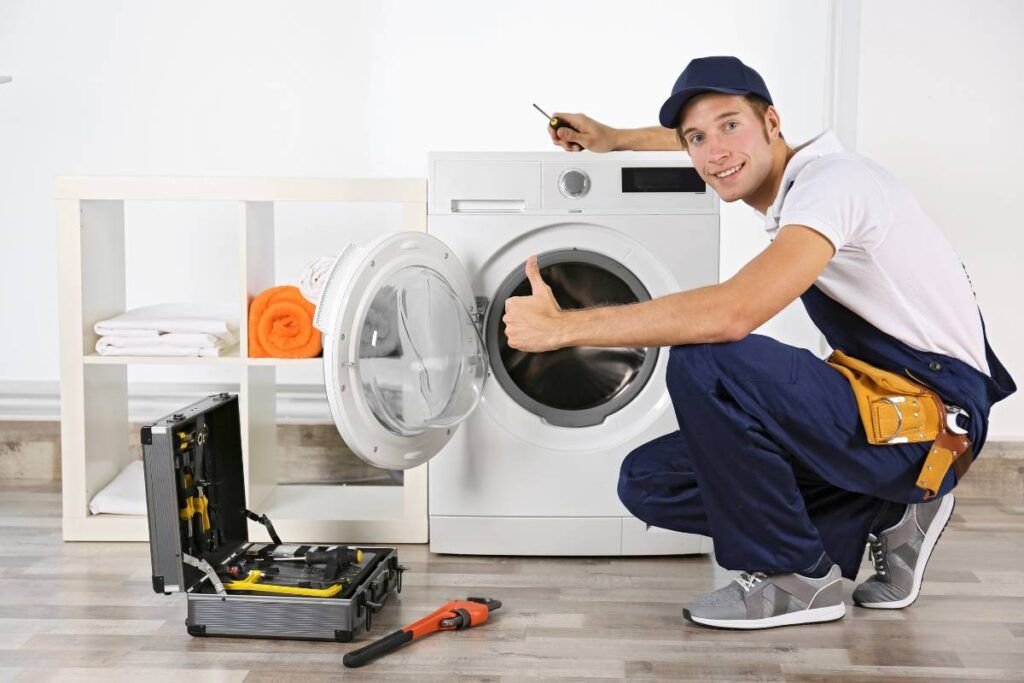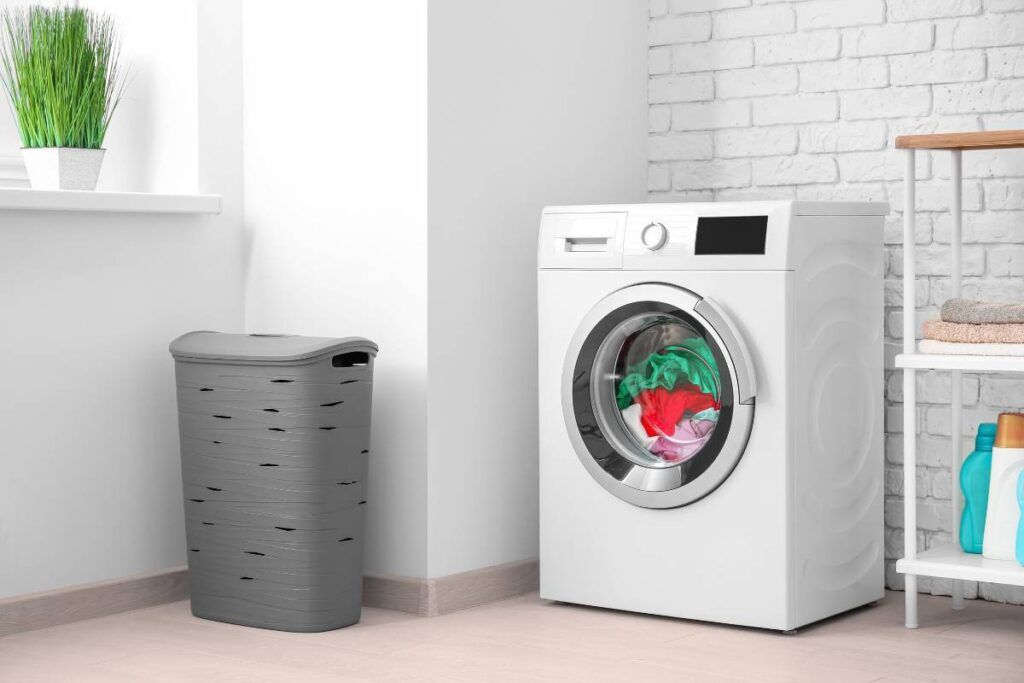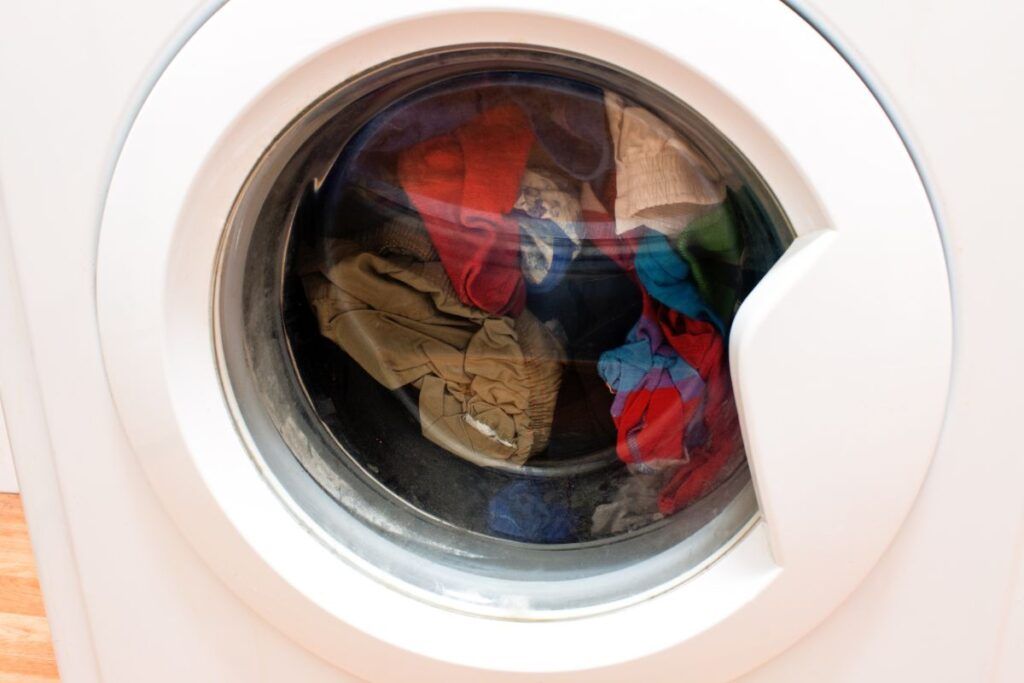Bosch washing machines have a common way of communicating faults through error codes. If you want to know the common error codes in your Bosch washing and how to fix them, you are at the right place.
The error code E3 in the Bosch washing machine occurs when the door is not latching properly. You must reset the washing machine or replace the door lock to fix this issue. When water temperature issues arise, it communicates as an E1 error code. Replace the heating element to fix this issue.
| Error codes | Description |
|---|---|
| E-3 | Door lock error |
| E-1 | Heating issue detected |
| E-2 | The drum does not rotate |
| E-4 | Unusual heating issue |
| E-6 | Draining issues |
Check out our list of top-handpicked products for all your electrical, appliance, and HVAC system needs to keep your home running smoothly.
This post includes some affiliate links.In this article, I will help you understand 5 common error codes of the Bosch washing machine and the steps to fix the errors. So, keep reading.

What are the common Bosch washing machine error codes?
Error codes help you to figure out and fix the issue.
It indicates specific faults in your washing machine, and you can use it to understand how to fix the issues.
1. Error code E3
Error code E3 in the Bosch washing machine communicates that the door is not closing properly.
If there are issues in closing the washer’s door, the washer won’t start.
If the washer is having trouble getting started, it is because the door lock is damaged, and it couldn’t seal the door with the washing machine during the washing cycle.
You can fix this issue yourself if you are familiar with the technical aspect of the washing machine.
Here are the possible causes of the E3 error code in the Bosch washing machine:
- Loose wire connections
- A faulty door lock
- Control board issues
Follow the steps to fix the problem.
Reset the washing machine’s control panel.
The control panel is the multifunctional mini-computer in the washing machine, which consists of several electrical components.
In the long run, electric components in the control panel may get damaged and cause glitches in the washing machine.
A simple reset can fix the glitches on the control panel and helps to clear the error code.
You can reset your Bosch washing machine by following the steps below:
- Disconnect the power supply from the washing machine by unplugging the power cord from the electric outlet.
- Let the washer stay disconnected for 5 to 10 minutes.
- Reconnect the power supply to the washer.
Resetting can reboot the electric components of the washer, clearing most of the control panel glitches.
Replace the faulty door lock
Door latching is an important mechanism that works with the bi-metal strip inside the door lock to keep the door shut while the washing cycle is running.
The door lock has electric components that pass the signal to latch the door with the washing machine.
If the door lock is damaged or worn out, you must replace it to bring the washer back to working condition.
Follow the steps below to replace the door lock in the Bosch washing machine:
- Unplug the washing machine from the electric outlet.
- Open the washer’s door, remove the door seal using a flathead screwdriver, and push the door seal inside the washer.
- Using a screwdriver, push the door lockout and disconnect all the wires to remove the door lock.
- Purchase the new door lock based on the model of your Bosch washer.
- Replace the new door lock and secure it in place. And reconnect all the wires you initially disconnected.
- Reposition the door seal and secure it with the retainer spring.
- Close the washer’s door and plug it into the electric outlet.
Check if the error code E3 has disappeared.
If not, hire a professional to check and figure out the issue and fit it efficiently.
2. Error code E1

The E1 error code occurs in the Bosch washer when the desired water temperature is not achieved at a fixed time.
There is a significant reason behind the temperature issues in the washer.
Most of the time, temperature issues arise due to faulty heating elements.
You must measure the resistance of the heating element to check if the heating element is faulty.
Also, check if the control board is damaged or has issues causing the E1 error code.
Follow the steps below to fix the E1 error code.
Check the resistance of the heating element.
The first step is to check the resistance of the heating element to find out if the heating element is faulty.
If the resistance of the heating element is between 38 – 46 ohms, there are no issues in the heating element.
You must replace the heating element if there is very high or low resistance.
Follow the steps to replace the heating element of the bosch washing machine:
- Unplug the washer from the power supply before beginning the repair to prevent yourself from electric hazards.
- Move the washer from its original position and place it in a comfortable position to work on the issue.
- Access the top panel of the washer and detach it by removing the screws and securing it with the washing machine.
- Detach the detergent drawer to access the inner parts of the washer.
- Disconnect the control panel from the washing machine by removing the screws attached to it.
- Open the door and remove the door seal by disconnecting the retaining clip from the washing machine.
- Detach the front panel of the Bosch washing machine by removing the screws holding it in place.
- You can locate the heating element at the bottom of the washing machine’s drum.
- Detach the wires connected to the heating element after taking a digital photo of the wire connections for future reference.
- Remove the retaining clip holding the heating element in the slot using a screwdriver.
- Pull the heating element out and check for any sign of damage.
- Remove the thermostat from the faulty heating element and replace it with the new one.
- Replace the new heating element in the slot at the bottom of the washer’s drum.
- Secure it with the nut using a screwdriver.
- Reconnect the wires by referring to the photo you took.
- Reattach the front panel and secure it with the screws.
- Reattach the control panel and secure it with screws.
- Reattach the top panel and secure it with screws.
- Reattach the detergent drawer and move the washing machine to its original place.
- Plug the washing machine into the electric outlet and check if the error code has disappeared.
3. Error code E2

E2 error code in the Bosch washing machine occurs when its drum is not rotating while you start the washing cycle.
If the motor is faulty or stops working, it will not let the drum rotate.
The common fault that decreases the motor’s efficiency is when the motor’s brush is worn out.
To fix this issue, you must replace the motor brush from your washing machine.
- Unplug the washing machine from the power supply.
- Remove the drain hoses from the water supply pipe.
- Detach the back panel from the washing machine by removing the screws.
- You can locate the motor at the bottom of the washer’s drum.
- Remove the motor by disconnecting the drive pulley from the drum.
- As a next step, disconnect the wires and earth tag attached to the motor.
- Locate the motor and, using a screwdriver, remove the bolt securing the motor to the washing machine base.
- Disconnect the motor from the washing machine and place it on a solid surface.
- The screws hold the brushes attached to either side of the motor.
- Take a digital photo of how the brushes are connected for future reference.
- Using a screwdriver, disconnect the screws securing the brushes with the motor.
- Prepare the new brush to replace the motor.
- Replace it in the motor by referring to the photo you took.
- Replace the motor at the bottom of the drum and reattach the drive pulley to the drum.
- Reattach the back panel and secure it with the screw.
- Attach the drain hose pipe and secure it with the locking tab using a wrench.
- Move the washer to its original place and plug it into the electric outlet.
Switch on the washing machine and check if the error code has disappeared.
If the error code persists, try resetting the washing machine to clear the control panel glitches causing the E2 error code.
4. Error code E4

Error code E4 communicated the unusual heating in the washing machine.
The unexpected heating occurs when there are issues with the temperature sensor of the washing machine.
If the control panel is faulty, it will also cause the error code E4 in the Bosch washing machine.
To fix this issue, you must replace the temperature sensor.
If the temperature sensor is faulty, it detects the false temperature, causing the error code E4 in the washing machine.
A temperature sensor, also known as a thermistor, is attached to the heating element.
Follow the steps below to replace the temperature sensor:
- Unplug the washing machine from the electric outlet to prevent yourself from electrical hazards.
- Move the washer from the cabinet and place it in a comfortable place to work.
- Remove the top panel of the washer by disconnecting the screws attached to it.
- Access the detergent drawer. Disconnect it from the washer and place it in a safe place.
- Remove the control panel from the washing machine by removing the screws attached to it.
- Open the door and disconnect the retaining clip to remove the door seal from the washer’s door.
- You must remove the front panel to access the temperature sensor.
- Remove the screws attached to the front panel to disconnect it from the washing machine.
- You can locate the heating element at the bottom of the drum.
- You can see wires being connected to the heating element. Consider taking a digital photo of the wire connections for future reference.
- A bolt at the bottom of the drum will secure a heating element. Using a screwdriver, unscrew it and remove the heating element from the slot.
- A temperature sensor will be attached to the heating element. Disconnect it from the heating element.
- Replace the new temperature sensor with the heating element and put it in the slot.
- Secure the heating element with the bolt using a screwdriver.
- Redo the wire connecting using a photo you took.
- Reattach the front panel and secure it with screws.
- Reattach the door seal and secure it with the retaining clip.
- Reattach the control panel and secure it with the screws.
- Secure the top panel with screws and attach the detergent drawer.
- Plug in the washer and check if the error code E4 has disappeared.
If the error code persists, there will be issues with the heat relay.
Seek help from a professional to fix the heat relay issues.
5. Error code E-6

E6 error code in the Bosch washing machine occurs when there are draining issues.
The main causes of draining issues are a clogged drain hose, dirty filter, or drain pump issues.
Follow the steps below to fix the error code E-6 in the Bosch washing machine.
Unclog the drain hose.
Drain hoses expel the water from the washing machine after the drain cycle.
If the drain hose is clogged, water won’t drain from the washing machine resulting in the E-6 error code.
Follow the steps to unclog the drain hose:
- Begin by disconnecting the power supply from the washing machine.
- Move the washer to the comfortable place from the cabinet to work comfortably.
- Access the back side of the washing machine.
- Disconnect the drain hose from the washing machine using a wrench to release the clamps holding it in place.
- Inspect the drain hose to see the condition of the clog.
- If there is no stubborn clog, you can run the hot water inside the drain hose to remove the dirt and debris deposition.
- If the clog is too stubborn to escape the hot water treatment, you must use a dash of vinegar and baking soda mixture to run through the drain hose. Or you can buy a ready-made drain cleaner to make the cleaning easy.
- Purchase a plumbing snake to insert down the drain hose to remove the clog completely. Turn the plumbing snake clockwise and anticlockwise to remove dirt and debris accumulation.
- Once the drain hose is unclogged, reattach it to the pipeline of the washing machine and move it back to its original place.
- Plug it on and check if the error code has disappeared.
If not, continue with the next step.
Clean the filter
The drain filter catches all the dirt and particles from the washing cycle to prevent the drain pump from getting clogged.
If the filter is clogged with dirt particles, you must clean it using soapy water.
Locate the drain filter at the base of the washing machine; using a screwdriver, remove the screws, securing them in place.
Twist it and disconnect it from the washing machine.
Wash a filter in soapy water and remove the excess dirt using a brush.
Once you clean it, reattach the filter.
Check if the error code has disappeared, or consider hiring a professional to see if there are issues with the drain pump.
Final thoughts
Error codes are common figures that indicate the faults in the washing machine. Error codes differ based on the washing machine brand and model.
It is important to know what the error code indicates to fix the error efficiently. In this article, you can find 5 common error codes and how to fix them by following the step-by-step process. If you can’t fix the error yourself, consider hiring a professional.
Related articles:
- 6 Reasons Your Washing Machine Is Off Balance (+Fix)
- Can You Put Detergent Directly On Clothes? (+The Correct Way)
- Can You Run A Washing Machine With A Generator?
- 5 Common Samsung Washing Machine Error Codes (+Quick Fix)
- 8 Common LG Washer Error Codes (+Quick Fix)
Reference: Bosch official troubleshooting guide
